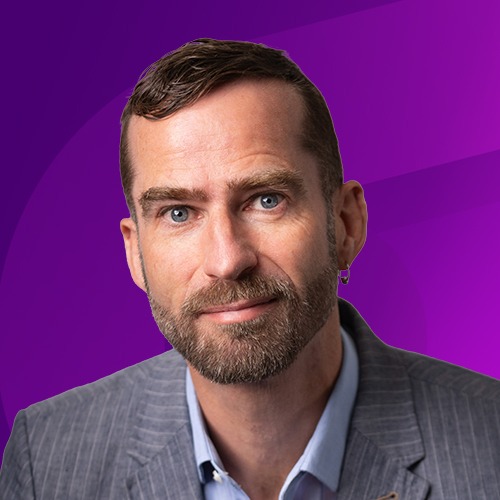In the realm of resilience, some leaders don’t just weather storms – they redefine how we prepare for them.
Alice Kaltenmark is one of those leaders. A respected voice in business continuity and disaster recovery, Alice blends deep technical expertise with an unwavering focus on people and purpose. As a recently-named board member for the Business Continuity Institute (BCI), her career has been a masterclass in adaptability, service, and practical vision.
In this candid Q&A, Alice shares the real story behind her unexpected entry into resilience, the evolving role of AI, and the principles that guide her leadership in times of change.
Q: Did you always want to go into disaster recovery and resilience? What were some important early influences for you?
Alice: I entered the business continuity and disaster recovery realm via reorganization. The organization I led was disbanded and the only open position available at the time was a BC position. I was not a happy camper at first and fought being labeled a “project manager.” This changed over time as I became involved in the build of a second data center (recovery site) literally from the ground up. I really started to find my niche in my ‘second’ career when I sat the CBCP course and realized that I had been operating in the resilience realm for over 10 years already. My instructor for this course also introduced me to BCI. This was a pivotal point for my career as I embraced the larger resilience community and began building a network that makes things happen.
I also was blessed with leaders that believed in me and sponsored me as I thrived in the world of riding the line between the business and technology operations.
2. What do you think is the hardest part of IT resilience in the age of AI?
Alice: Identifying the data that must be protected. There are so many perspectives that need to be considered: proprietary information, customer data, business processes information, systems information, employee data, intellectual property, business intelligence data, application data, and configuration data.
This presents the need for controls surrounding how AI is used, where data is sourced from, where data is stored, and what LL models are used. This all points to protecting the organization from unintentional confidential information being made available in the public domain.
Next is the job to backup the critical data (both local backup and immutable backup) and determine the resilience strategy that best fits the business protection requirements.
3. What are we not thinking about enough as technologists?
Alice: Keeping the resilience strategy simple. I continually bring teams back to the basics to keep them focused on what is needed now versus what would be really cool. Don’t get me wrong, you need to have an eye to the future and where you would ultimately want to be but keep today focused on the basics. This affords you the opportunity to take advantage of new opportunities and technologies as they arise while protecting what is in place now.
4. What are the rules of the road you set for your team in fast-paced change?
Alice: Keep your eye on the prize – what is the ultimate goal or objective to be achieved. This makes having a solid resilience strategy and roadmap vital to long-term success. Keep the goals more aspirational vs definitive. This affords you the ability to dynamically adjust your roadmap to fit the road your organization is currently traveling. You need to have a firm grasp of the foundational resilience basics to inform your adaptation choices when they present. I have found that keeping any resilience strategy focused on the customer experience helps to keep everyone aligned on what to do when. This also requires one to know who the customer really is.
5. What’s your secret to effective exercising?
Alice: Keep the exercise realistic and simple. Don’t make it so complicated that you lose the team in the first 15 minutes. The focused, short time windows enable effective and impactful discussions that evoke change where most needed. This also generates the critical ‘aha’ moments that are the real gamechangers.
For technology exercises or tests, keep it all realistic. I find not focusing on the cause of the disruption is best. Focus on the recovery or response for effective results. Also, use the same production processes for managing a major event that you use for daily incidents. This builds on the inherent muscle memory of the teams and allows them to focus on the recovery response.
6. Resilience is a balancing act, because you also have to hold people accountable and sometimes make tough decisions. How do you think about that?
Alice: Keep it visible at all times who is accountable for what. Resilience is a business imperative, not a technology one. This starts at the top of the organization and flows down and throughout the organization. It is up to each employee to perform their respective role to achieve real resilience for the organization.
When conflicts in priorities arise (when not if), then you have to identify the risks of each decision option in front of you. Deciding whether to implement resilience strategies at the operational level should not be the responsibility of a first line manager or project manager. The decision should rest with the person who has profit & loss responsibility for that part of the organization. Whatever decision is taken, the decision maker is the one who accepts the inherent business risk of that decision.
It is up to the resilience professional (that would be the likes of us) to clearly lay out the pros and cons of the resilience risk associated with a decision. We are the facilitators not the owners. Ownership resides with the respective business leader(s).
As with all things related to risk management, keep a documented record of all decisions made.
7. You were recently named to the board of BCI. What is your vision for BCI at, what seems to be, an important inflection point in the industry?
Alice: We are definitely at an inflection point in the resilience world. For BCI to deliver on our tag line “Leading the way to resilience,” we cannot rest on our laurels and stand firm on the tried-and-true methods of the previous 30 years. BCI recognizes this and is committed to embracing technology and the broader resilience community. Our world is getting smaller all the time and the workforce dynamics are rapidly changing.
The blend of younger perspectives, technology, and experienced professionals will make for an exciting explosion of possibilities that will bring together the many facets (or faces) of resilience and result in ‘bite-sized’ resilience capsules from every industry and discipline sector. Stepping away from the one-size-fits-all approach and breaking it down to effective elements will be a game-changing opportunity for the industry to welcome and embrace.
As with all culture changes, this will take time to achieve. Time is not a luxury anymore though. The time to act is now. BCI realizes this and expect to see exciting news ahead.
8. What is the leadership playbook you are writing in real-time?
As you chart your own course, make sure you are bringing along your next-in-line that will take your place when it is time for you to move to your next adventure. This is critical for those of us who are teams of one or two people. It is also true for leaders of any size team or organization. Always have an eye on who you would like to take on your role. This keeps you on your toes for the day-to-day as well as recognizing talent that is ripe for picking and nurturing. It is also very empowering to choose your successor. Nothing beats doing your homework!














